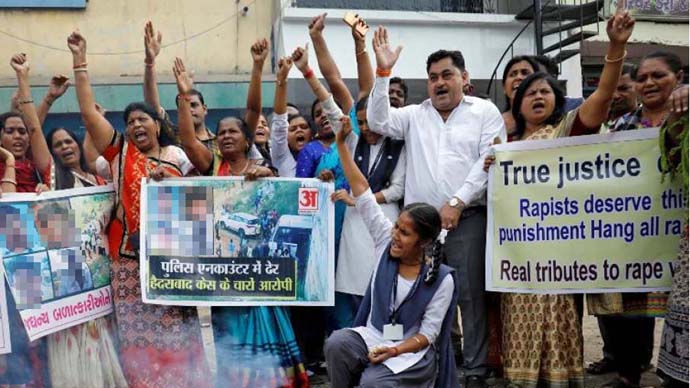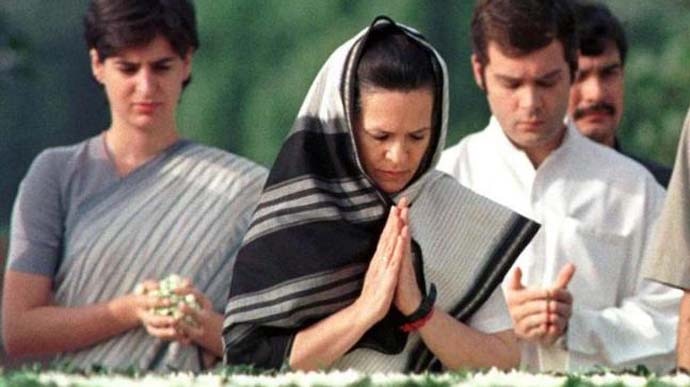Futility of retribution: The encounter killings in Hyderabad

Violence is abhorrent, but never ever is the answer to it more violence. Isn’t that what Gandhi taught us?
The Supreme Court has ordered a judicial inquiry into the killing of four men accused of raping and murdering a veterinary surgeon in Hyderabad.
Chief Justice of India SA Bobde told Mukul Rohatgi, representing the state of Telangana, “We don’t want to assume facts. This is a question of credibility. Why are you resisting an inquiry? We expect you to be more statesmanlike in this. We are not saying you are guilty. We are not saying you are wrong. At this stage, we don’t know anything.”
Air-dropping justice
At the popular level though the people of India seem to know what exactly happened. What they want to believe is the opposite of the truth the SC is trying to get at.
The police usurped the role of the courts because the courts are ineffective. The police themselves are ineffective. In public perception, the impotence of ‘The System’ was corrected in one fell swoop, in the dead of night, like in countless ‘angry young man’ films.

Instead of stones, the cops were greeted with boxes of sweets, failure turned to triumph. An ‘encounter’ in India is a euphemism for extra-judicial killing — a cover for vigilante justice. Believing otherwise takes away from the comforts of retribution, the satisfaction one gets from skipping the queue, the air-dropping of justice into a quagmire of hopelessness. This rough-and-ready form of justice can work at the folk level.
The news goes viral, the word spreads and percolates in a manner that a news report of someone being hanged for rape, after due process of law has been followed, doesn’t.
Anonymous take-downs on social media, at times, have a touch of the extra-judicial about them. In a way, this too is like an encounter killing except that it takes place in the virtual space. The legal process is deemed lengthy, tortuous, untrustworthy. It has been said that retribution is a natural human instinct. We know that civilisation is a precarious thing and hangs by a slender thread. Human beings are creatures of instinct, but we are also deeply moral creatures.
Expressing pleasure in an act of retributive justice means a lessening in our stature as moral beings. Let me give you two examples to do with the retributive instinct. I’m walking down a road and am mowed down by a motorcycle. I am injured and bleeding. When I tell others about it, the response is: Why didn’t you chase him down and punch him in the face? I lose my bua, my father’s sister, in a horrific road accident. No one bothers with sympathy. Instead, every person I tell this to asks: “Did you catch the culprit?”
Deterrence myth
I mention this to illustrate that for us the path to inner peace, following a traumatic incident, always lies through a tit-for-tat act of violence. I fail to see how this heals my wounds or succeeds in resurrecting my aunt from the dead.
There was something unsettling about the way everybody from auto-rickshaw drivers and shopkeepers to badminton stars and legions of housewives celebrated the Hyderabad encounter. Try as I did, I found it hard to share in the gleeful celebration.

Violence is abhorrent, but never ever is the answer to it more violence. Isn’t that what Gandhi taught us? Deterrence is a myth, as is evident from the epidemic of lone-wolf shootings that continue unabated in America, which has a notoriously brutal privatised prison system; death by electric chair and lethal injection is broadcast live on CCTV. The videos are all over social media, satisfying people’s bloodlust but not by any stretch acting as a deterrent.
An eye for an eye
Take the 2011 Norway attacks, the worst massacre in the country’s history. 77 people were killed at a summer camp, many of them children. The right-wing extremist, Anders Behring Breivik, who carried out the attacks, was given the maximum sentence of 21 years, which can be extended if he is still seen as posing a threat to society. He was allowed to ramble in court and give his demented side of the story.
The New York Times reported that he was put in a suite of three cells, equipped with exercise equipment, a TV and a computer with no Internet. The Norwegian belief in merciful justice wasn’t shaken.
Most believed that this was a fair punishment that would allow them to move on. A victim’s father told the Associated Press that he felt no rancour towards Breivik: “He doesn’t mean anything to me. He is just air.”
The Norwegian example demonstrates that retribution, even if it is instinct, can be overcome in civilised society. Closer home, there isn’t a better example than Sonia, Priyanka and Rahul Gandhi who famously pardoned the killers of Rajiv. Priyanka met Nalini, one of the convicts, in 2008 in Vellore Jail. Nalini’s death sentence was commuted to life because she was pregnant. The satisfaction of instant justice is fleeting. It doesn’t fix root causes. It cheapens us, it cheapens the victim. An eye for an eye makes us all blind. It doesn’t bring back the ones we have lost.
(Courtesy of Mail Today)

